When Frank sees something, he must have it. So when he finally has the opportunity to own a unique painting by Peter Booth, he is willing to do anything to get it. The fetish to own the painting destroys everything else in his life, only when the painting is ripped of its commercial value does he see its true meaning.
The film was released on ABC in 2009. Laurence Fuller takes the lead role and wrote the script with director Jim Lounsbury. Trilby Beresford produced. Max Cullen and Asher Keddie also star.
“A powerful short film that explores the nature of desire, obsession and possession” – Film INK Article
reel loop Interview 2009
This interview by Kieron Casey was originally published in Reel Loop in 2009
Possession(s), a new Australian short, featured one of the most notable launches in recent memory. To coincide with the film’s release a famous Peter Booth artwork, Painting (Man With Bandaged Head), was sold off in The Deutscher and Hackett Important Fine Art Auction.
The tie-in between the film and the auction comes in the shape of actor Laurence Fuller who used the painting, which he owned, as inspiration for the dark, brooding short. His character Frank, upon seeing the Peter Booth work, becomes embroiled with a sense of obsession; he simply has to own the piece and will do anything to make it so. However, it soon becomes clear that Frank is not the only one consumed by the desire to possess.
Laurence Fuller shines in the lead role and it is easy to see why he is a much sought after young actor. Having attended the Method School of acting in the UK, Fuller has put together an impressive acting CV in both theatre and in short films. As well as acclaimed stage performances in the likes of Madness in Valencia, Fuller has also created his own film company and is truly making a name for himself across the world – he has, to date, worked in three seperate continents. He is hoping to soon add a fourth with work in the United States. Mr. Fuller generously donated his time to talk about how the auction went, who picked up Possession(s) for distribution, his multi-country career and his future projects.
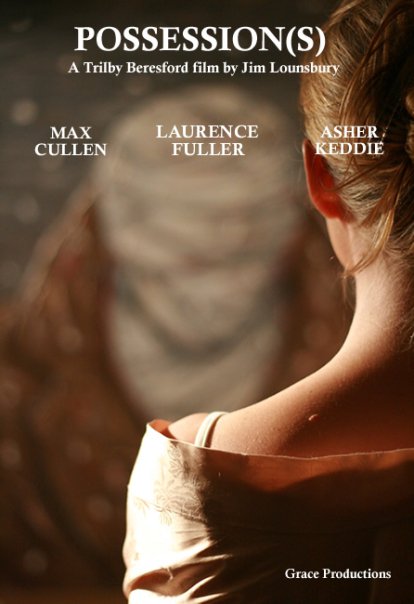
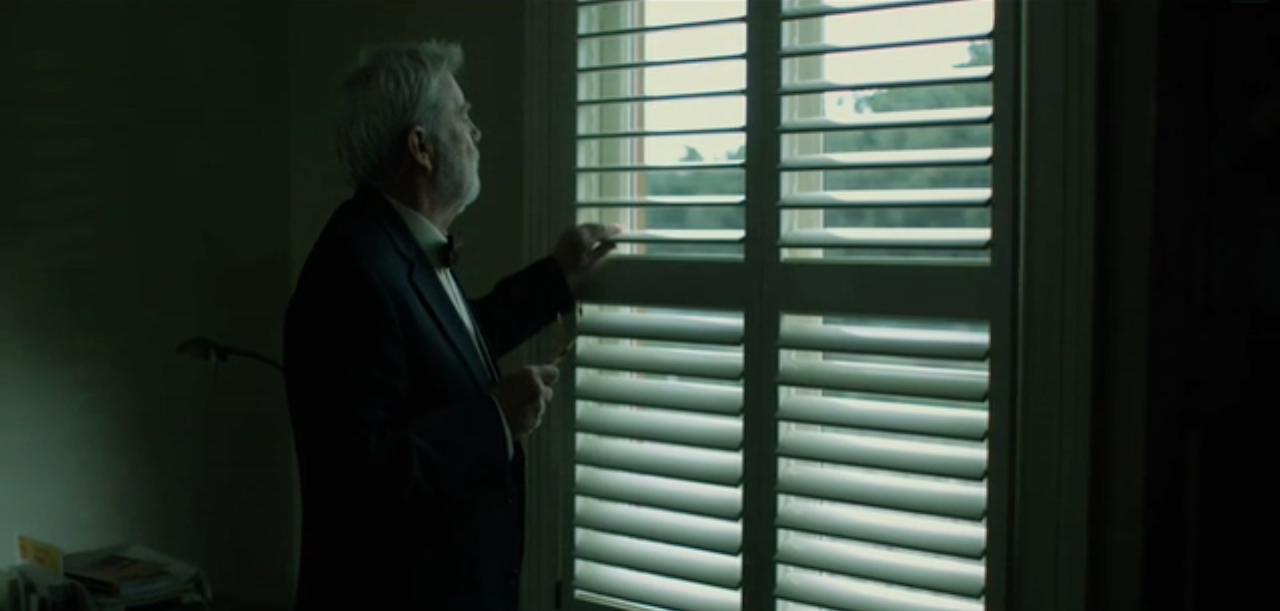
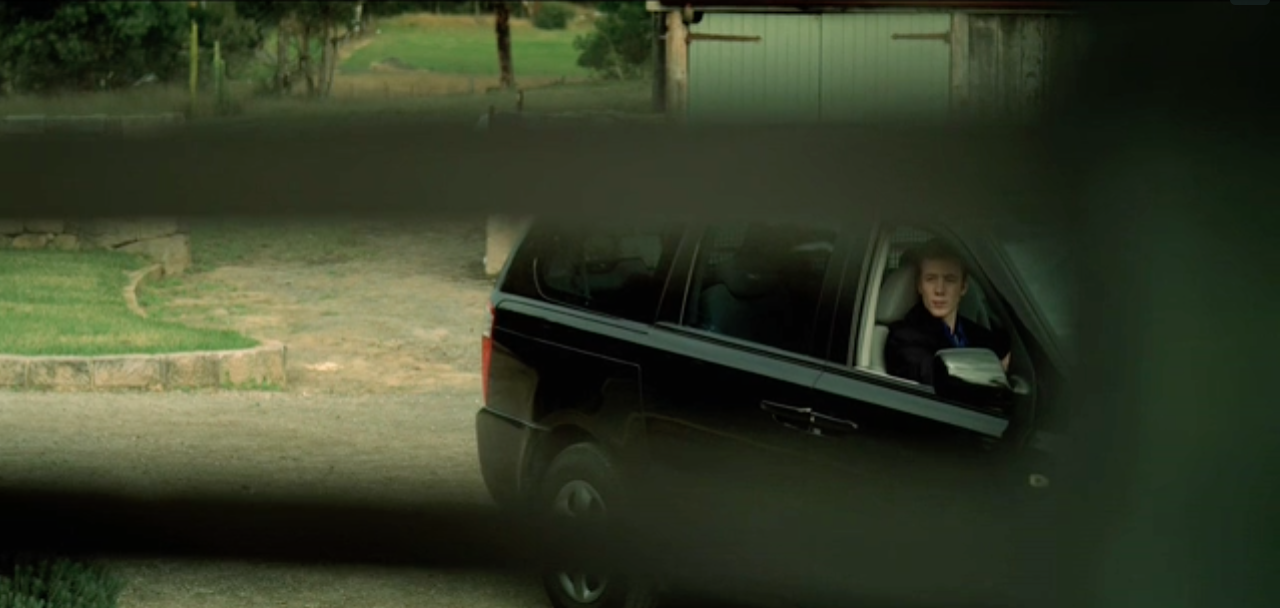
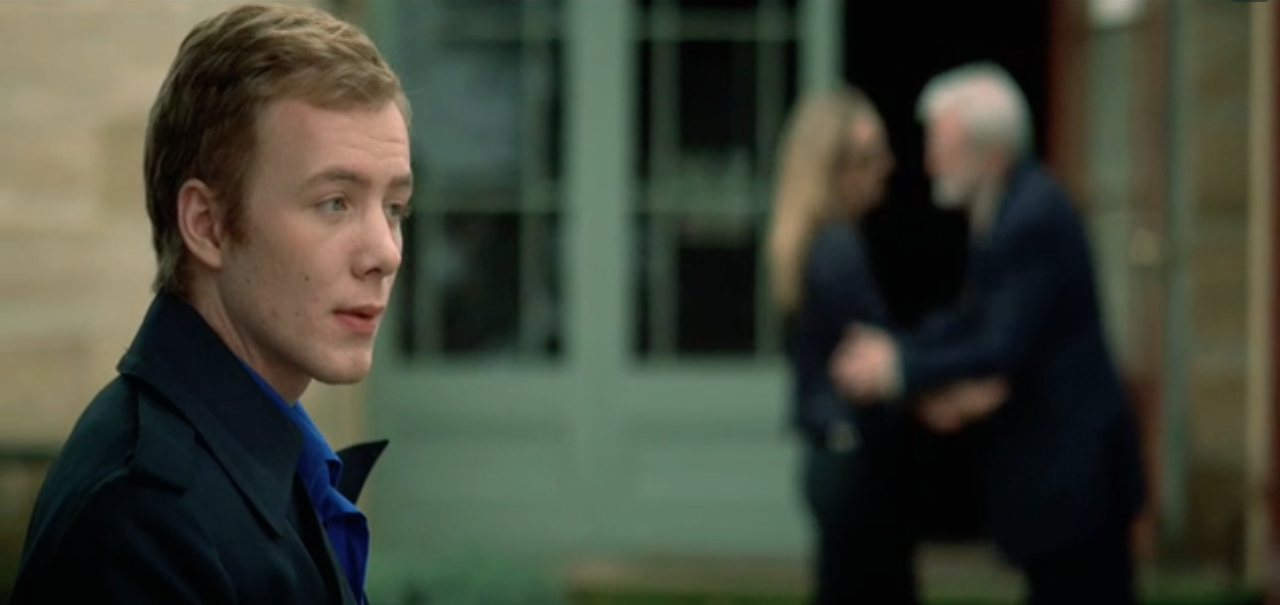
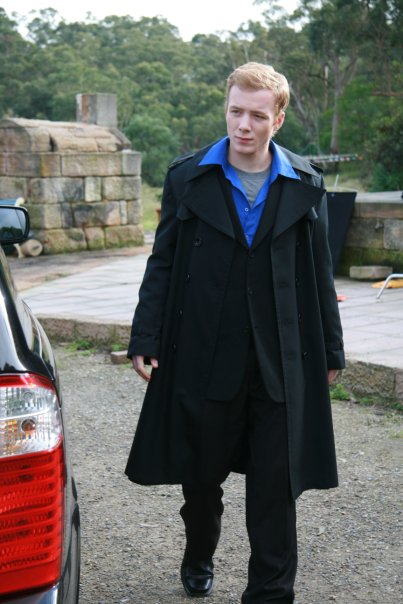
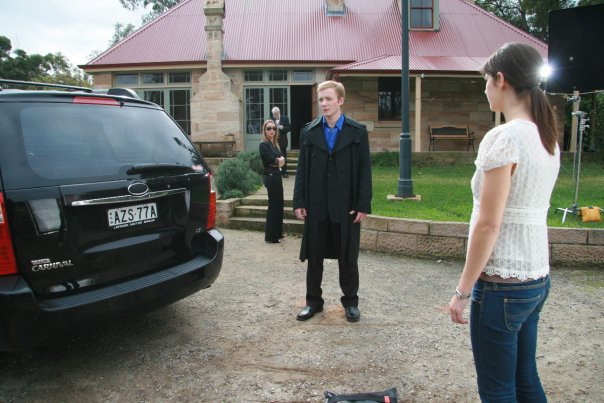
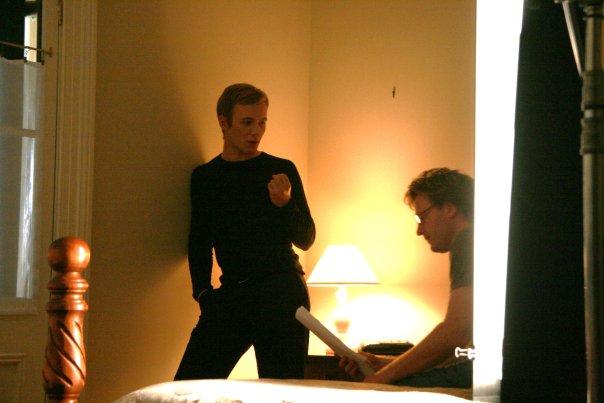

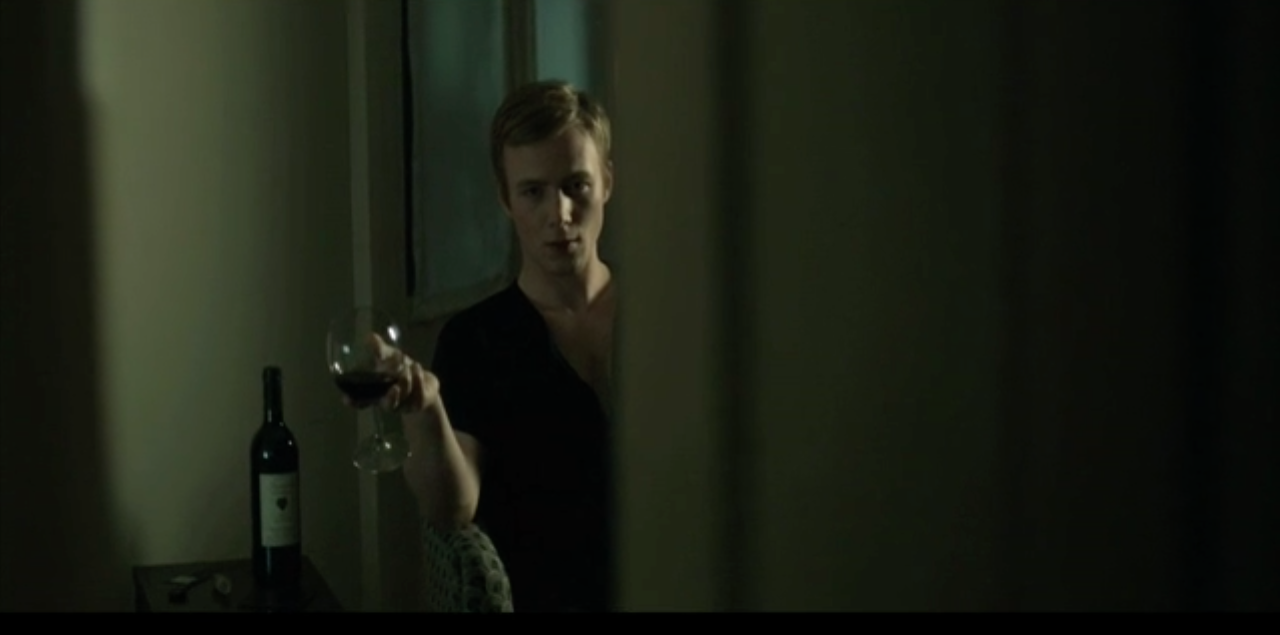
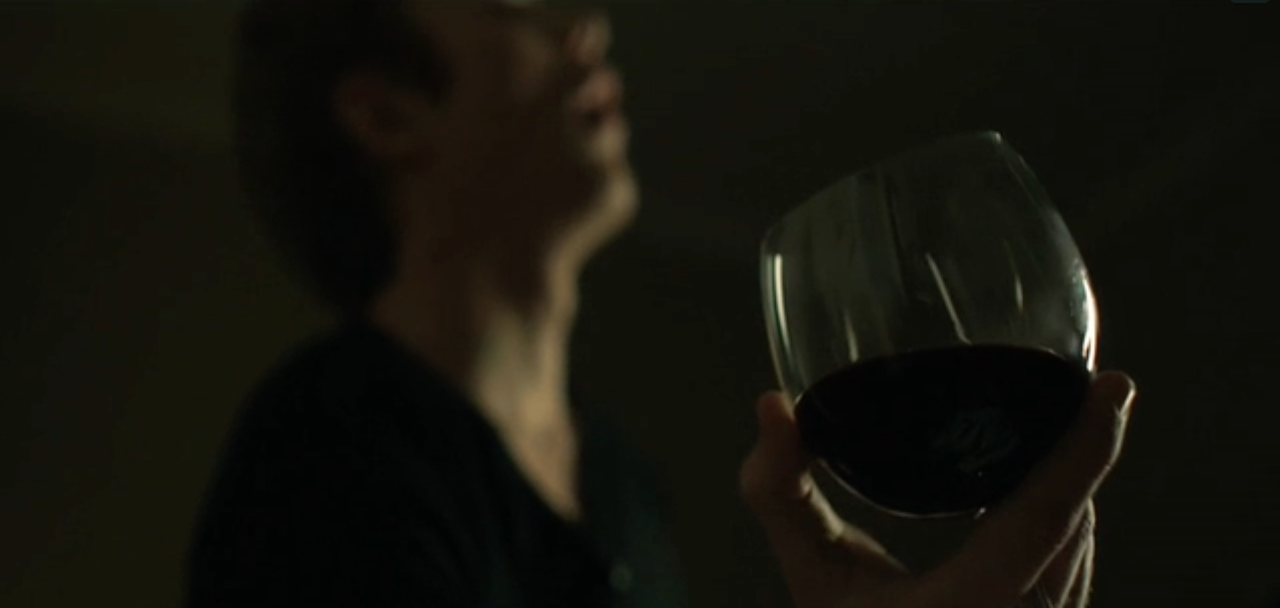
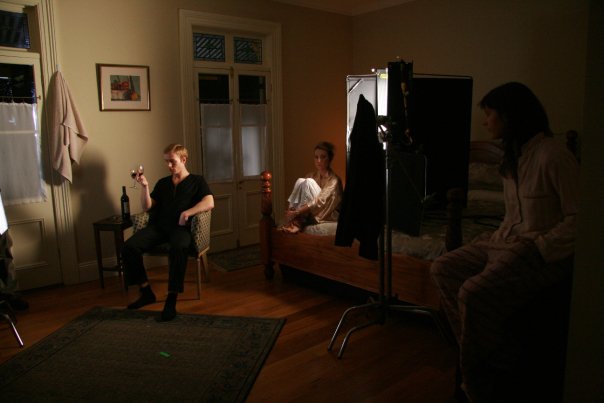
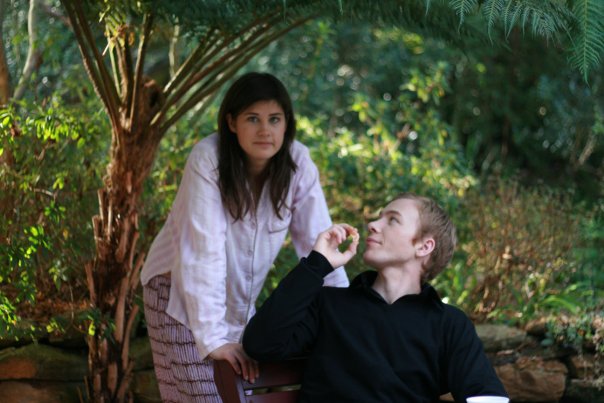
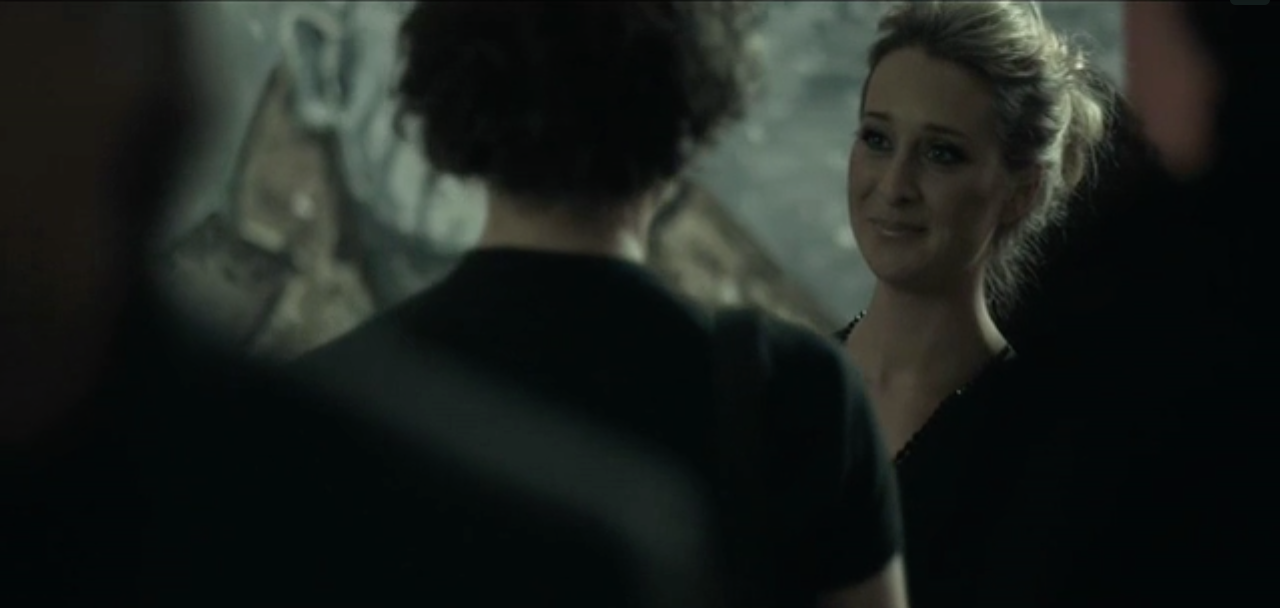

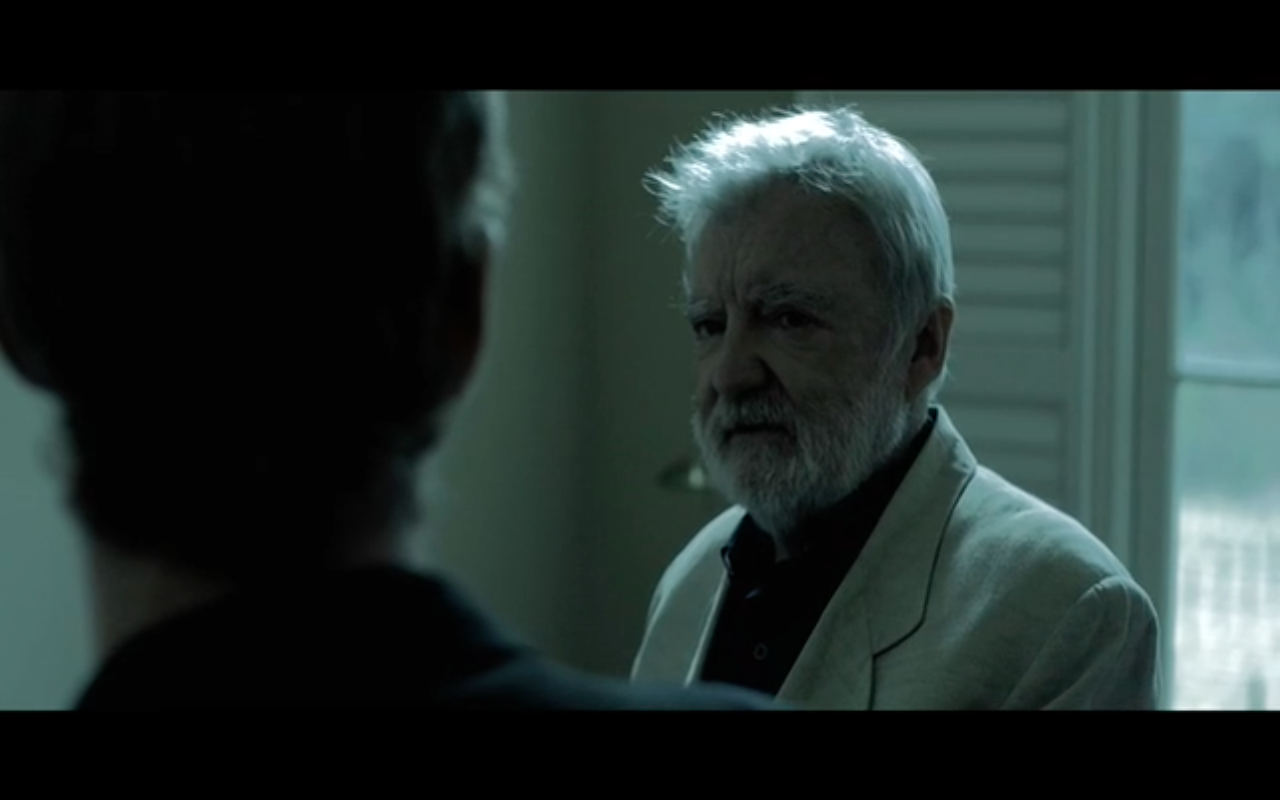
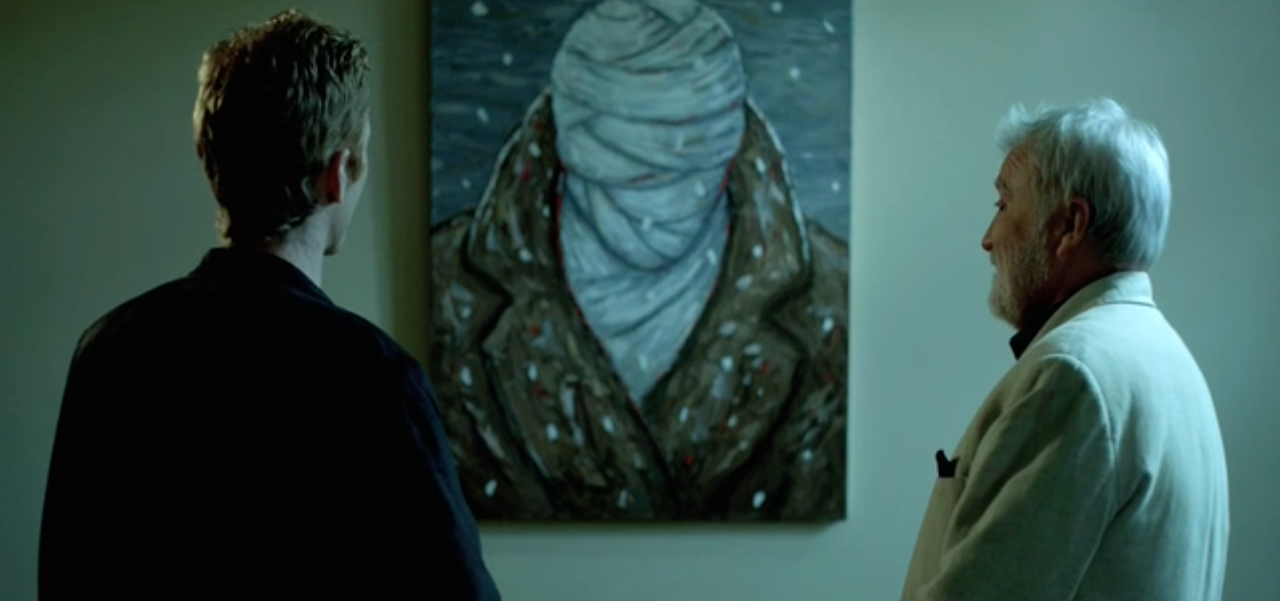
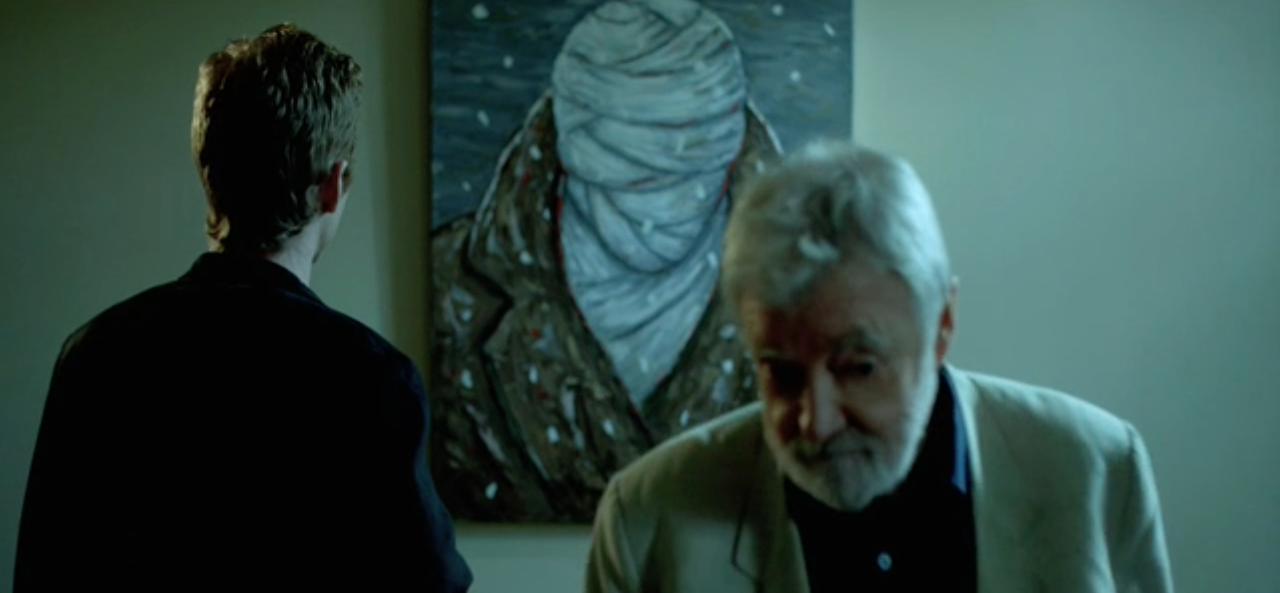
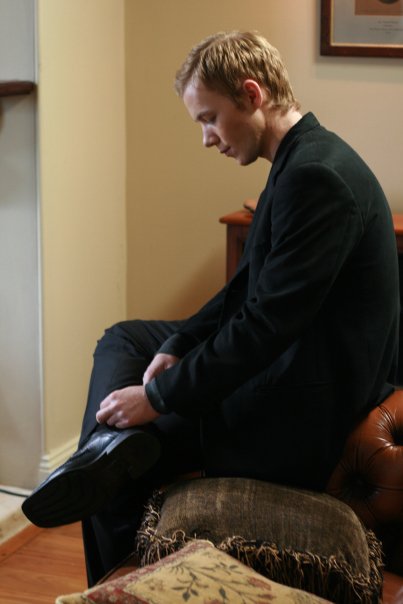
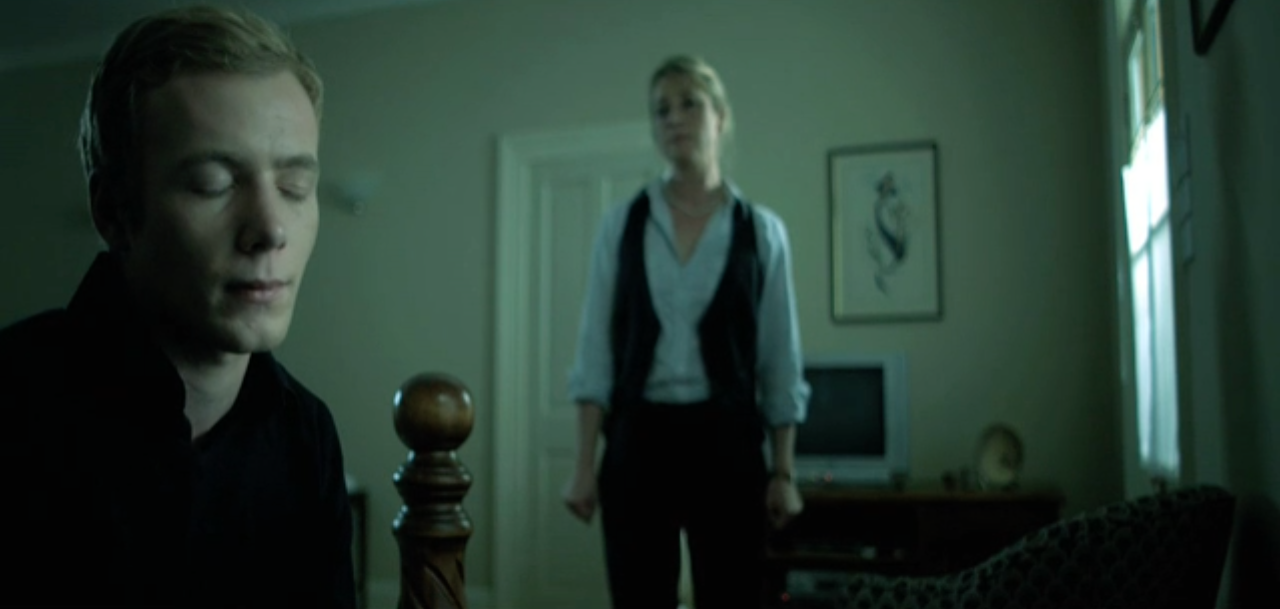
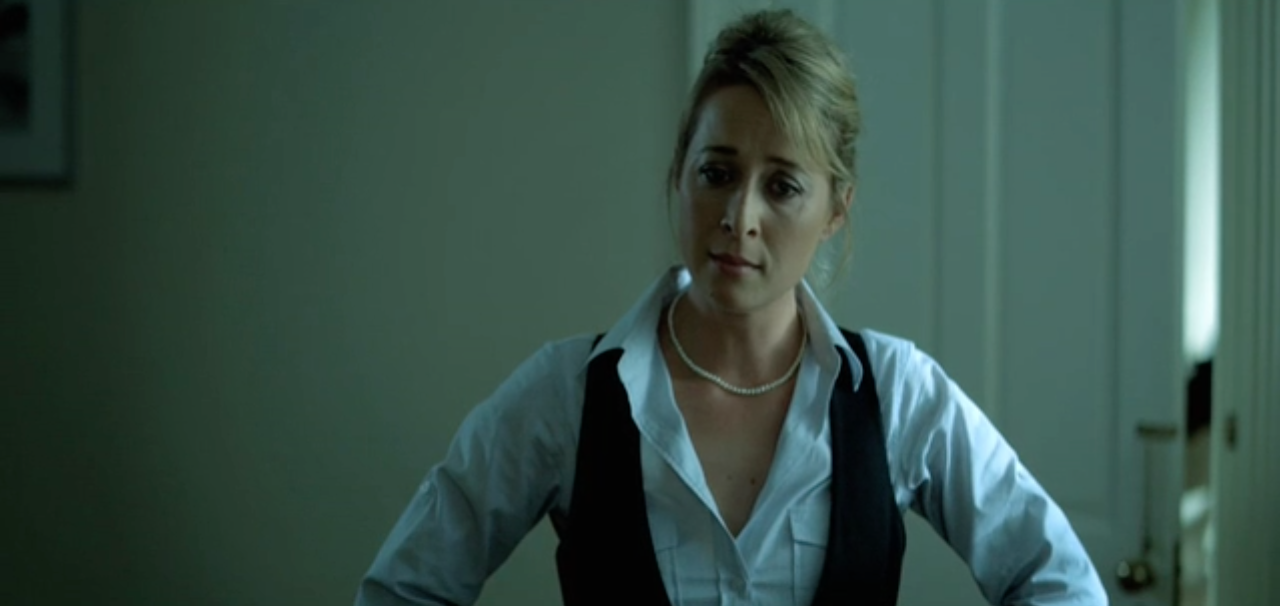
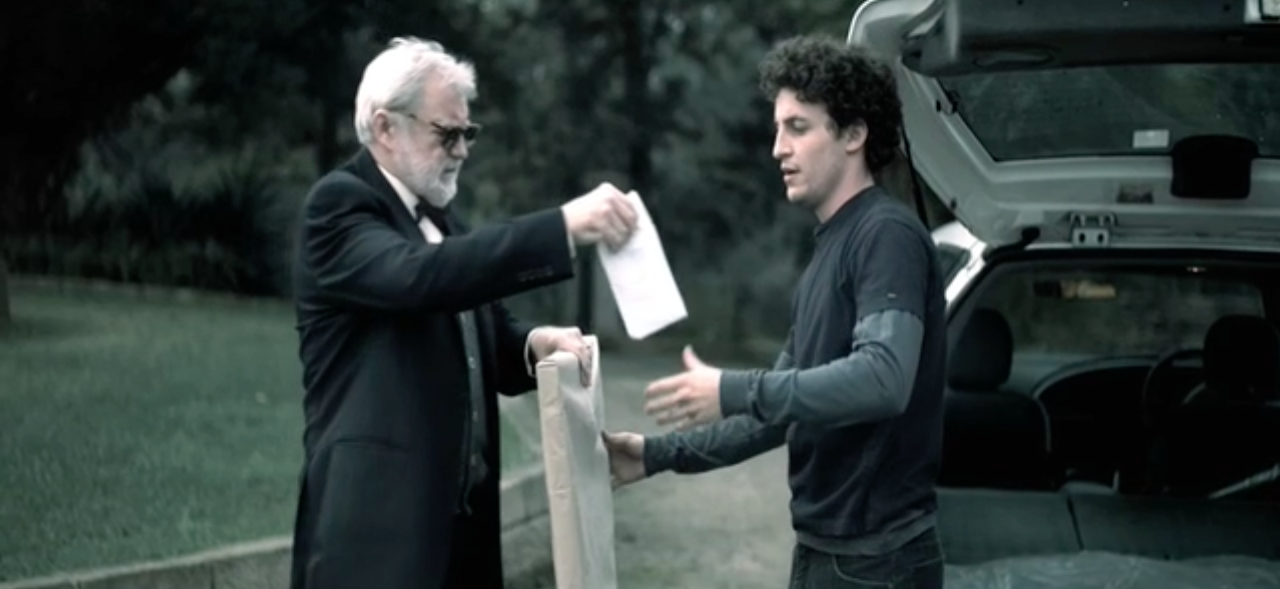
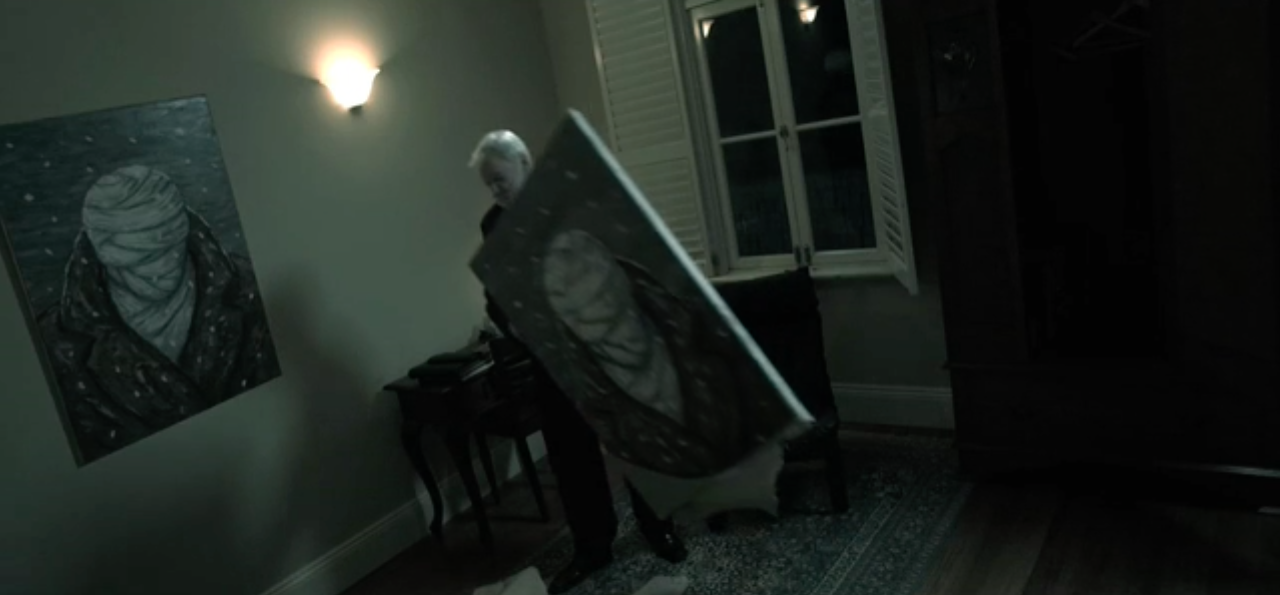
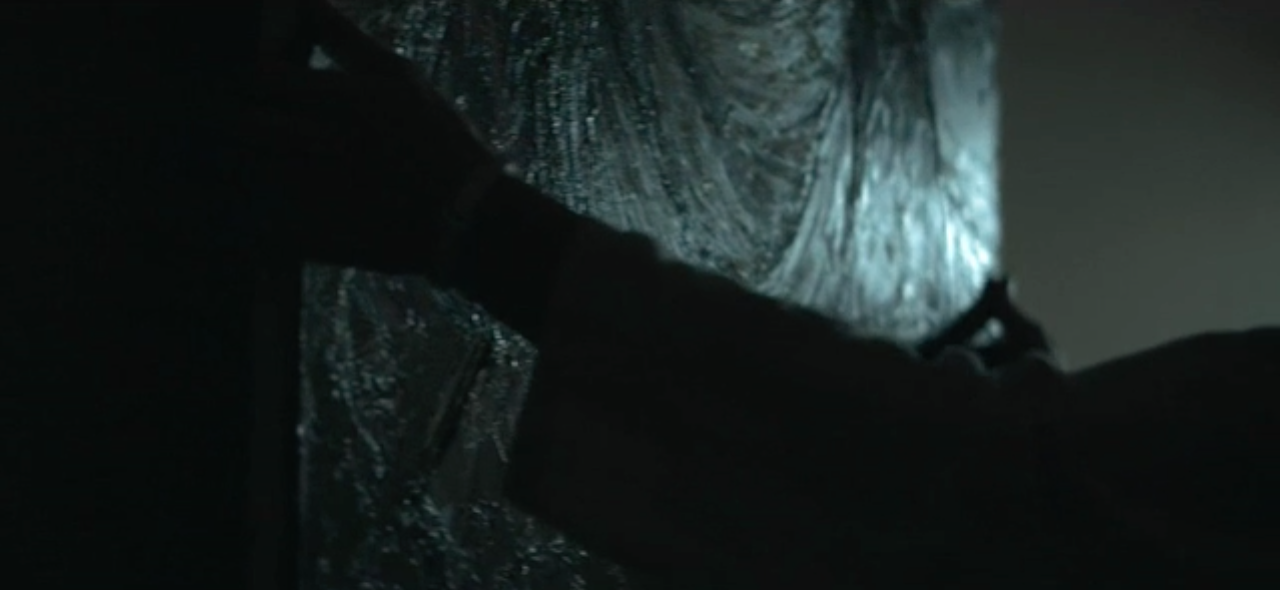
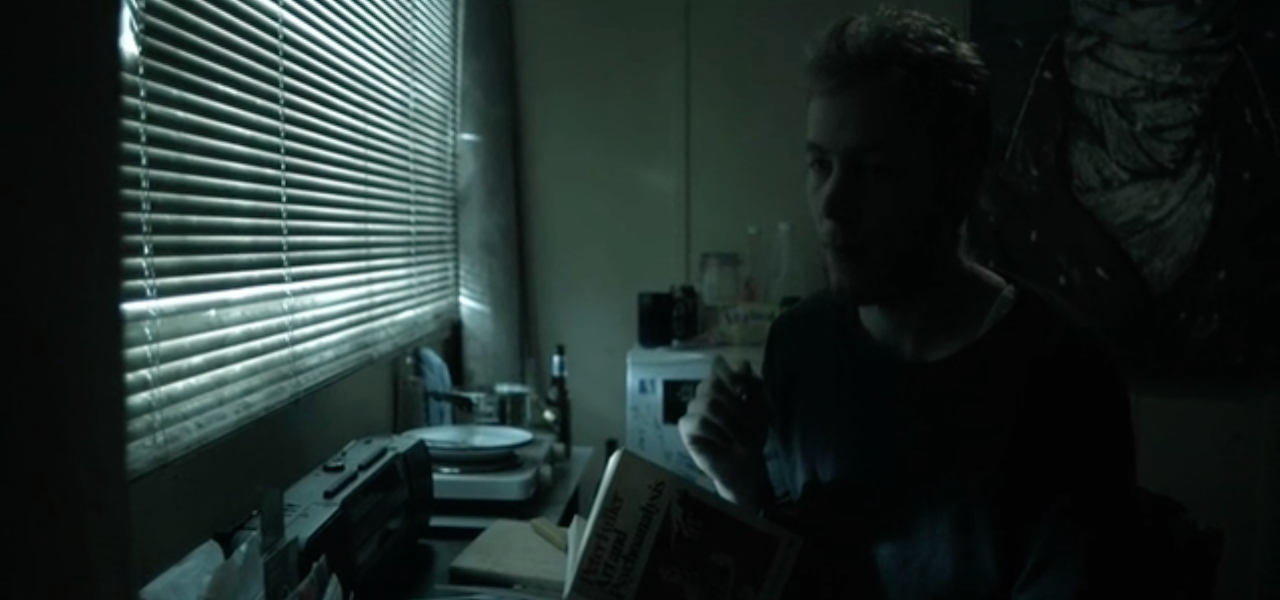
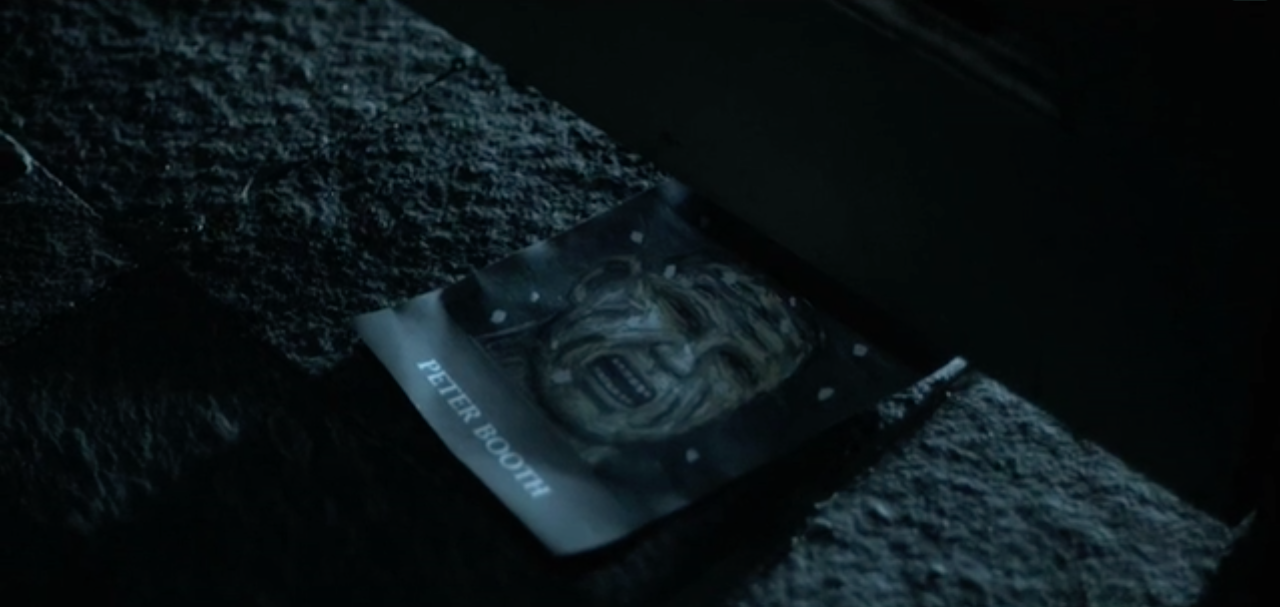
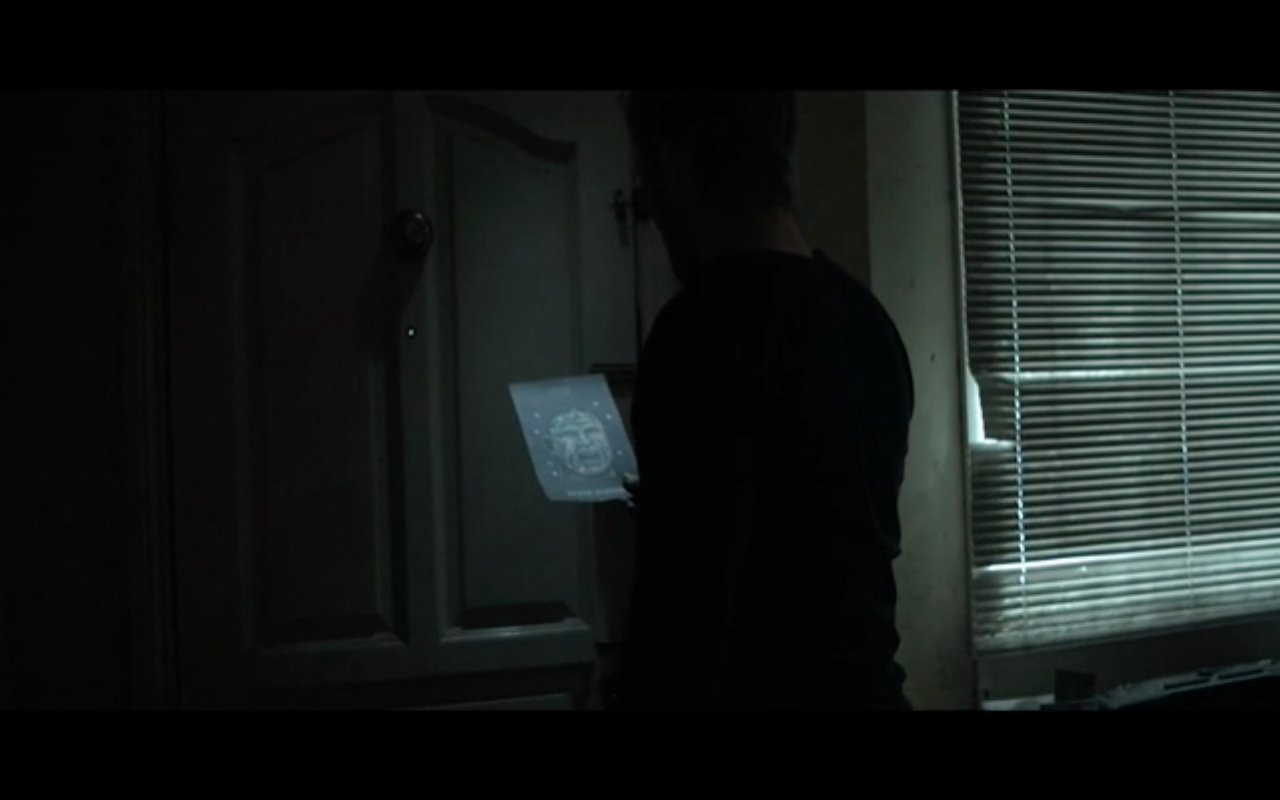
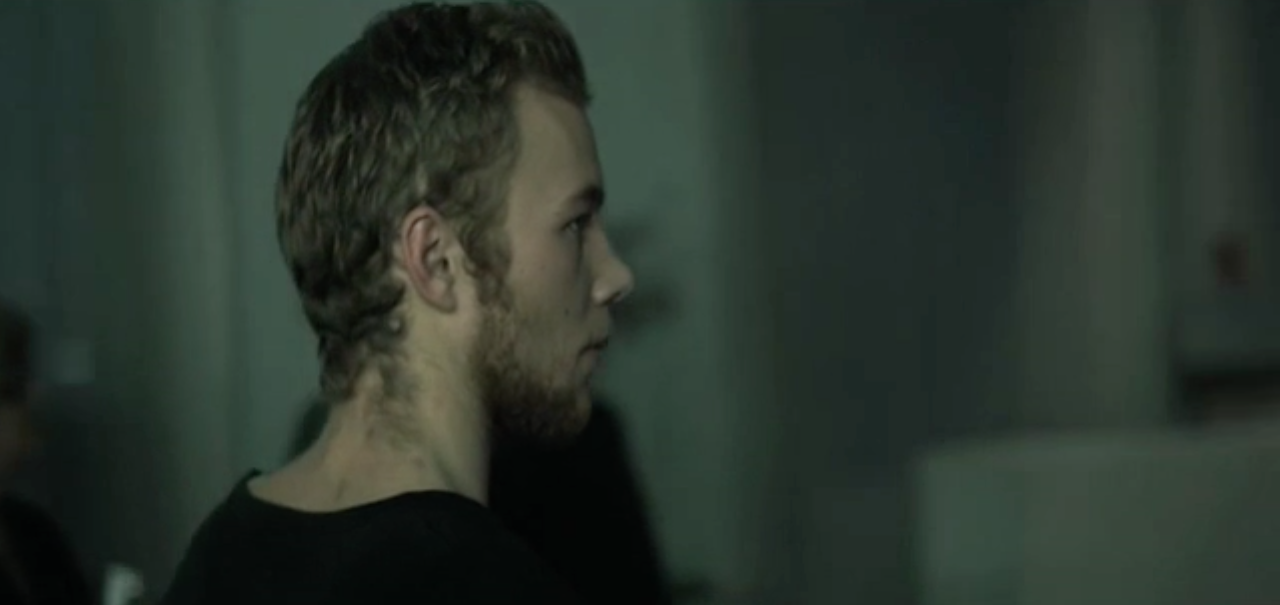
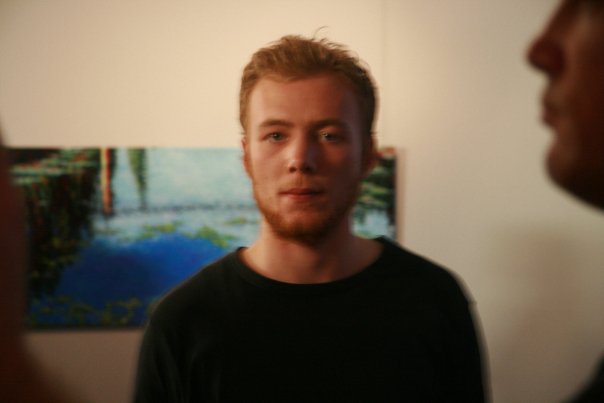
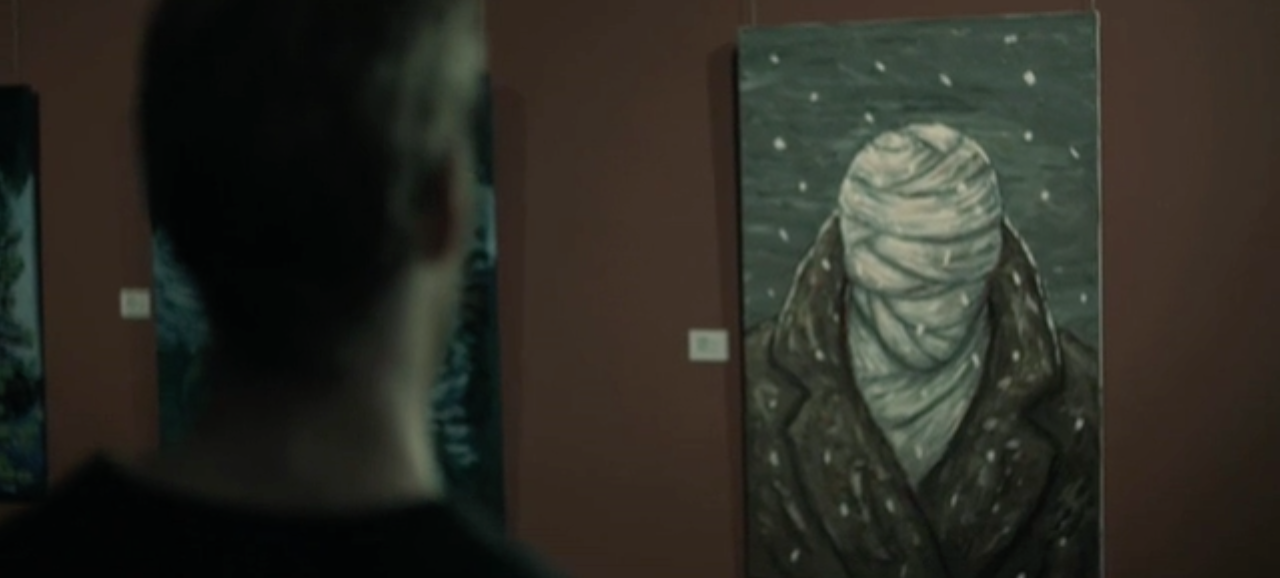
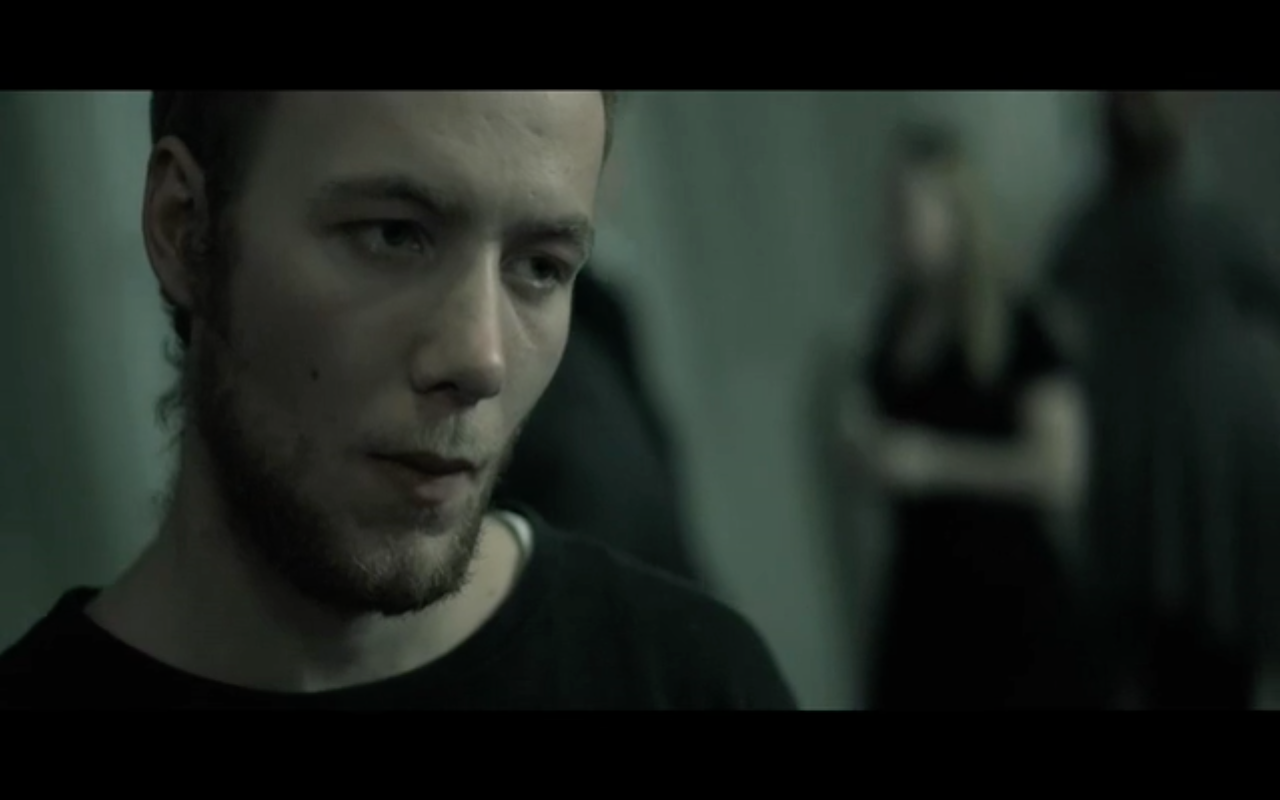
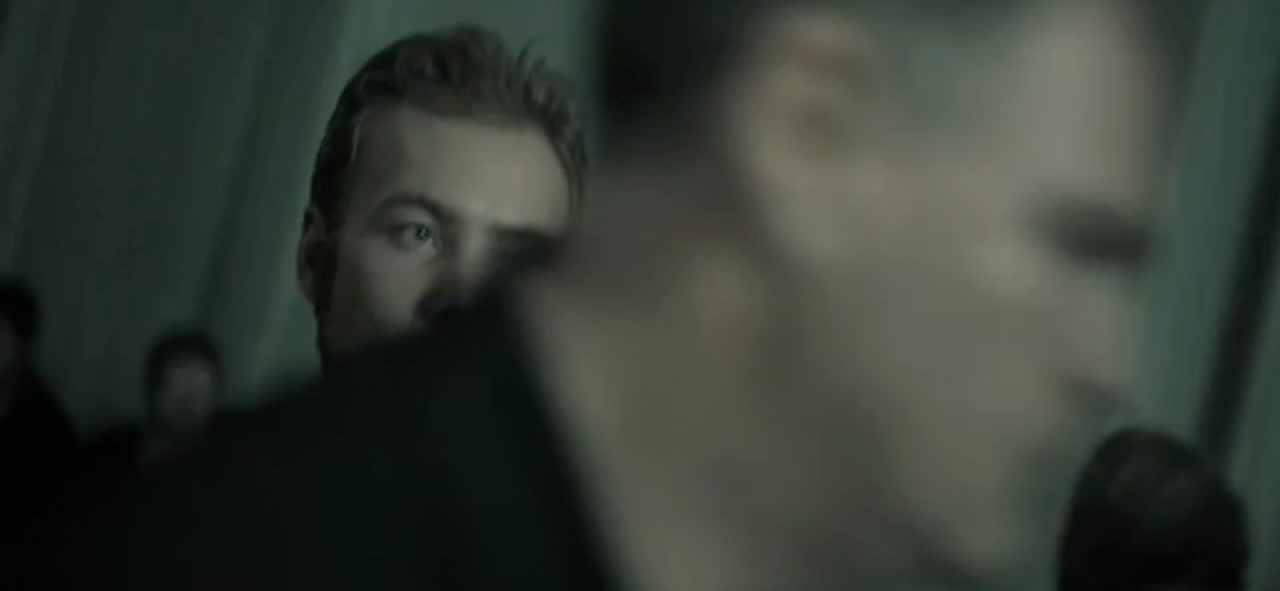

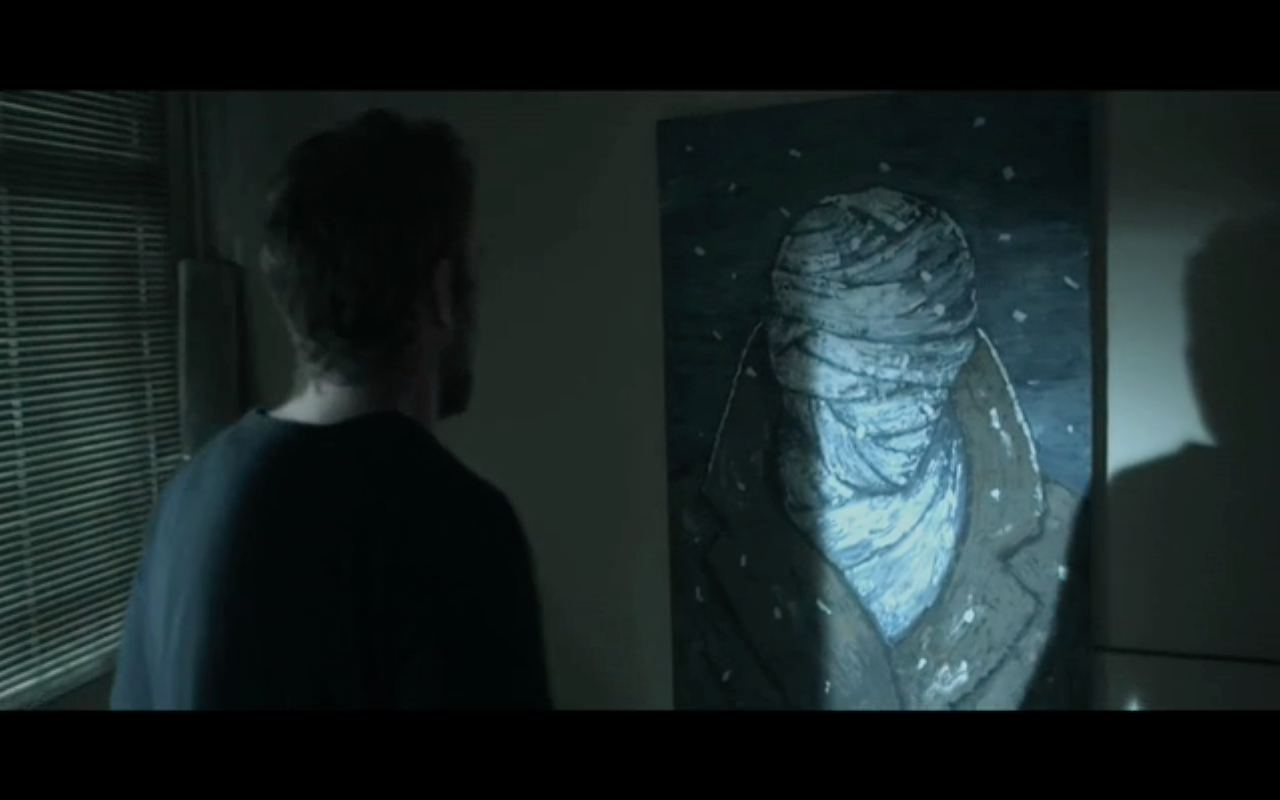



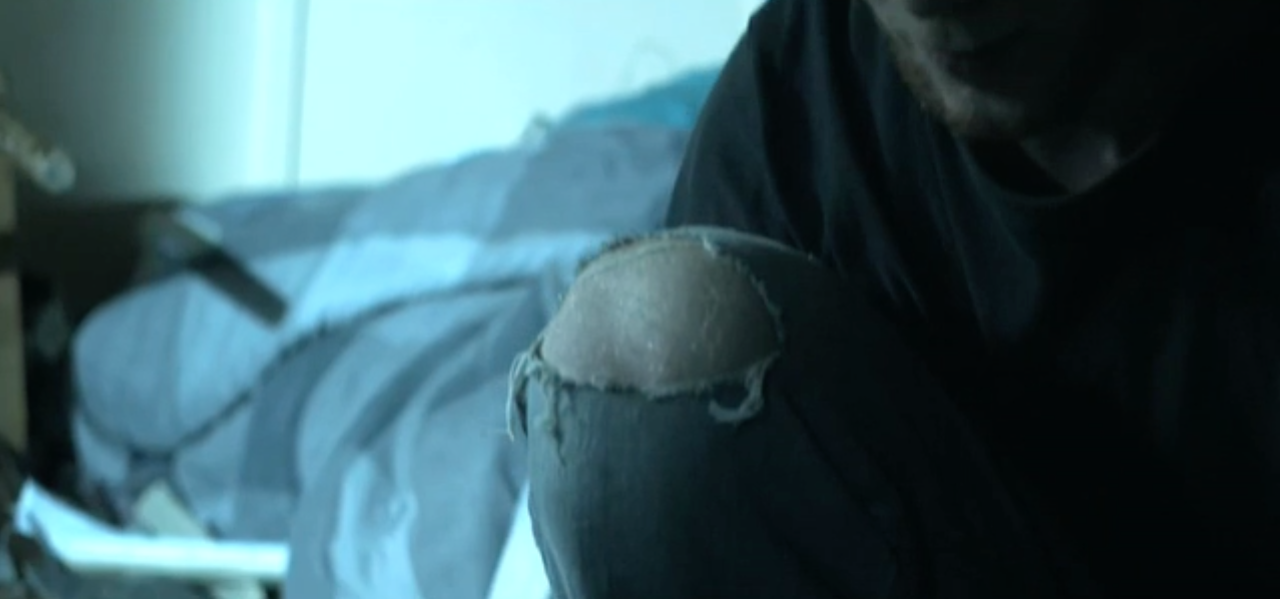
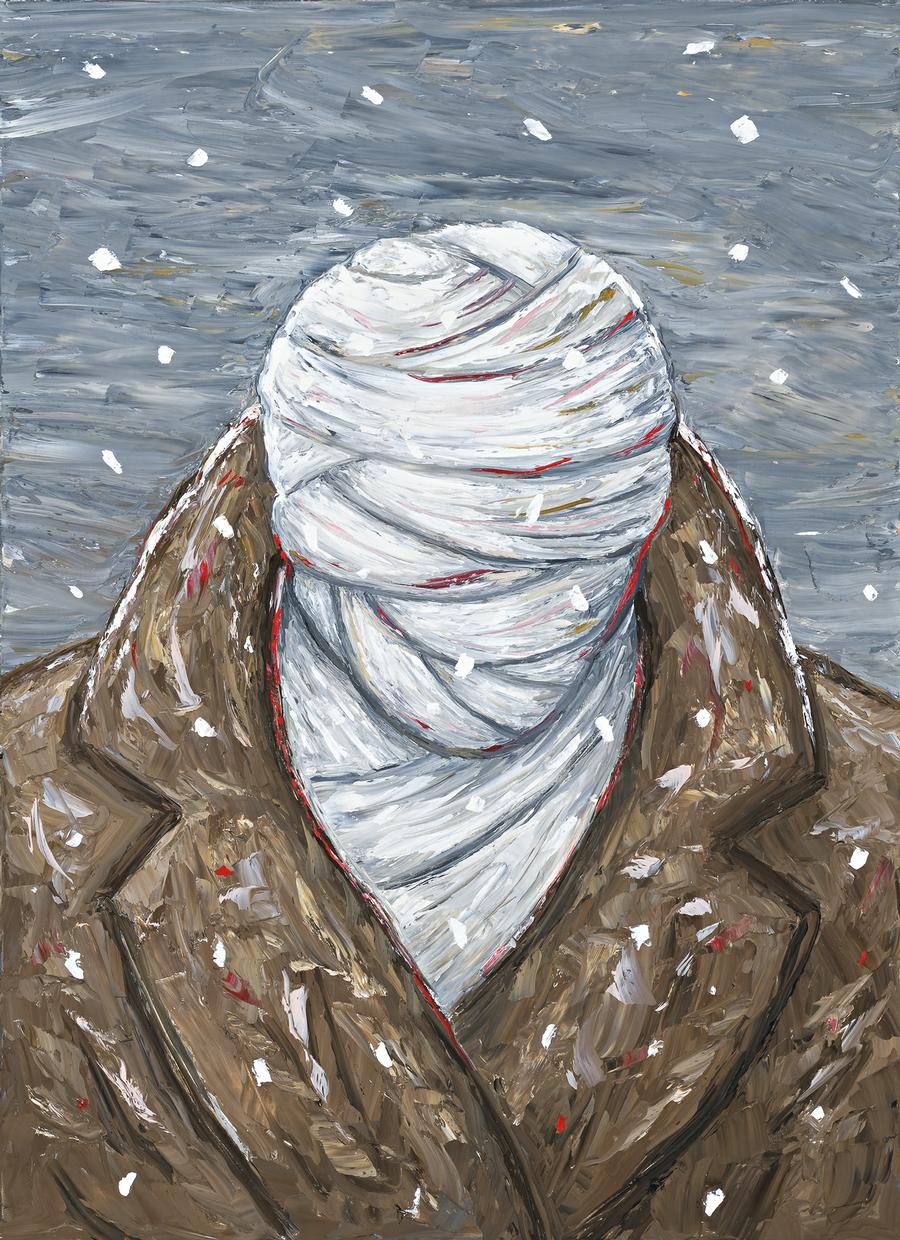
Possession(s) is the latest of your short films. How would you describe it to Reelloop readers with no knowledge of the project?
Possession(s) is about the connection between a person and a work of art in a very real and un-glorified way. It’s not pretentious about the subject. It’s about a collector and his desire to possess not just this painting but the people around him and trade them like objects. None of the characters are without their flaws and the people are very calculating with each other. Max Cullen said the script was very Chekhovian in that way, which I thought was pretty savvy.
The film was launched to coincide with the sale of the famous Painting (Man With Bandaged Head) by Peter Booth on November 25th. Was the auction a success?
Yes it was, the painting sold for $96k and the film was picked up by ABC’s (Australian Broadcasting Corp.) acquisitions department for broadcast. The auctioneer Damian Hackett, who is my favourite art dealer in the world right now, is to be thanked and congratulated for his innovation on this project. Most would not have been so open minded to such a new concept, let alone successfully pull it off.
What was it about Peter Booth’s painting that made you “have to have it” in the first place? Was it something like your character Frank says in the film – “not something everyone understands… you either get it or you don’t”?
The picture is about isolation in contemporary society. We’ve all felt that at some point, if just for a day. I was 18 at the time and had just come back from Africa expecting to find the meaning of life, but returned even more confused about humanity and how things worked. This picture spoke to me, it was like a piece of me that was missing and if it was hanging on my wall then everything would be OK… I’ve chilled out a bit since then. I sold it so I could move to the US and make more films.
Promoting a film in the way you did, to coincide with a major arts sale, is somewhat of a new way of doing things in the film industry. How did this affect the release of Possession(s)? Did the film drum up interest for the painting or vice versa?
It’s a first for the art world as well. I think there aren’t many people who work in both industries and try to merge them. I saw no reason why this can’t be done. I’m very happy with what we achieved on this project, but to truly have success on a large scale with this concept, it has to be a feature.
The film is obviously a very personal project, one which I’m presuming you conceived yourself. How did the rest of the cast and crew come aboard?
I came up with the initial concept and raised the cash, but script and story development was a true collaboration between myself and the director Jim Lounsbury, with some important contributions from our producer Trilby Beresford. Jim came on board from a cold call, because he’s a clever guy, I had no film credits at the time and no mutual friends, but I think he saw a determination in me and wanted to explore the subject matter (which was surprisingly unfamiliar to him at that time).
Trilby was a close friend and eager to make another film. She’s amazing, 23 and already a pro film maker and writer in LA. She brought together the crew and logistics in a very short space of time. Once the script was complete it was the efforts of 30 odd people that made this film come to life. Max Cullen was our first and only choice for the role of Paul, as he’s not only one of Australia’s greatest actors but a highly respected and talented sculptor, so the transitions between both worlds were already there. I drove to his gallery in Gunning (outback Australia) and personally handed him the script, I think that gesture made an impression on him so he very generously accepted, we were over the moon. Asher Keddie was Trilby’s idea, she was perfect for the part, sexy and sophisticated. Asher has been working for a long time (considering her age) and she’s a star now so we were very lucky to get her as well. Jim was working with Rhys Muldoon on Lockie Leonard (for ABC) while the film was in post-production and managed to charm him into doing the narration. Another important part was the support we received from the Australian art world, Peter Booth’s dealer Rex Irwin was able to get us copyright for the painting, which was a very rare thing and leant us his gallery for the climatic scene at the end. I knew Rex because I bought the painting off him and was seriously in debt to him for about a year. We also have a cameo from the important surrealist collector Ray Wilson in the final scene. It was really a dream team and could very easily work as a feature with all the same people.
Possession(s) was the latest of your films you produced. Was the intention of this to be able to focus on more personal works away from theatre and other people’s films?
Exactly, I’m passionate about working on other’s films because I love working with people and particularly crave that working relationship between actor and director, there are so many talented film makers out their. But I have lots of ideas and I want to bring them to life, both personal projects and for a wider audience. Also, a lot of my close colleagues are very creative people and I want to collaborate with them on this level. At the moment I’m working on another short animation with Marcelle Hanselaar who is really one of the best contemporary painters in Europe. Then Jim and I will make a feature as a natural progression to Possession(s). Then I want to make a film about my father Peter Fuller, who was the leading British art critic throughout the 70s and 80s until he passed away in 1990, he led an amazing life with the short time he had on this earth and it would make a beautiful film. Again crossing that boundary into the art world, even having grown up amongst it, I still find it an exceptionally interesting place. I know the audience will as well, because it’s a collective group comprised of some of the most creative and eccentric characters in the world.
Possession(s) was inspired by a painting you bought and similarly your earlier short This Choir Of Angels was inspired by your own thoughts during a hang over. Whilst both of the pieces featured your creative input you directed neither. What are your feelings of going in to this field in later projects?
One day I might pull a Clint Eastwood or Mel Gibson, but acting is what I’m about. I’m definitely an actor who sometimes writes and produces when the right idea comes along. My idols are people like Sean Penn, Philip Seymour Hoffman and Billy Bob-Thornton, you can see how directing has enriched their work as an actor and visa verca, so yes one day, but you’ll see me in front of the camera many times before you’ll see me at the helm.
Many actors work exclusively in either theatre or film, yet you continue to work in both mediums – what are the differences between the two and which one, if either, do you prefer?
It took me probably until after Possession(s) to realise the amount of freedom that was available to me after the director called action. It’s something I started picking up off Max Cullen, as he was improvising all over the place (in subtle ways) that’s when the nature of spontaneity and truthful moments started to make sense. But ultimately once I felt comfortable in front of the camera I realised the actor is searching for the same goal in both mediums. First and foremost to entertain, then to engage and move an audience, they’re the most discerning critics of all, so an actor better do that baring their soul or the audience will spot their tricks in a second. The other aspect is innate chameleon like tendencies, the knowledge of how to inhabit a completely different person and pull it off. Or if it’s a leading part like Frank in Possession(s), the main objective is to tell the story as if the audience is experiencing it through me, so I strip everything back until there’s no barrier between me and the audience. But the differences between film and theatre are purely technical which is controllable. The important thing is the baring the soul part, which is an infinite pool, and at the forefront of both mediums.
As to my preference, that’s dependent on the material and the team I’m working with. I’ve done some great plays this year, two four star critic’s choices and a West End transfer (thanks to director Simon Evans). But my focus is film. That’s where I’m headed.
Possession(s) was shot in Australia. What inspired the dual focus on acting both sides of the hemisphere?
I wanted to train in Britain because it has the best drama schools in the world. So I went to Bristol Old Vic Theatre School because of Daniel Day-Lewis, then I found my way into the amazing theatre culture in London and started working with lots of young British filmmakers. But I’ve also kept on top of all the brilliant Aussie films that have been coming out and have a real desire to continue being a part of that. Plus next year I’ll be setting up in the States for an indefinite period. So really I’m a nomad. But then there’s Japanese film, I’ve worked with two Japanese directors this year (Mototake Makishima on "Nocturnal Silence"). I don’t really mind where I rest my boots, as long as I’m making cool films with talented people, I’m home.
peter booth painting
Provenance
Rex Irwin Art Dealer, Sydney
Laurence Fuller, London
Exhibited
Peter Booth, Rex Irwin Art Dealer, Sydney, 21 June – 16 July 2005
This work was the subject and inspiration for the Trilby Beresford Film, Possession(s), directed by Jim Lounsbury and starring Max Cullen, Laurence Fuller and Asher Keddie.
In the arena of Australian art, Peter Booth is a giant. One of the few Australian artists represented in the three major New York collections of the Metropolitan Museum of Art, the Museum of Modern Art and the Guggenheim Museum, Booth is widely considered to be the most important contemporary artist working in Australia today.
In a career that has included representing Australia at the Venice Biennale (1982), inclusion in all important surveys of Australian 20th century art such as; Creating Australia: 200 years of Australian Art, Art Gallery of South Australia; Federation : Australian art and society 1901–2001, National Gallery of Australia; and culminating in the major 2003 retrospective exhibition, Peter Booth: human/nature, National Gallery of Victoria, Peter Booth has contributed enormously to the rich visual culture of Australia.
From his early, dark, minimalist abstractions with which he gained initial notoriety in the groundbreaking 1968 exhibition The Field at the National Gallery of Victoria, through to his more recent figurative expressions, Booth creates powerful, challenging and ultimately incredibly desirable images which are keenly sought and tightly held by collectors and major institutions.
The strength and power of Painting 2004 (Man with Bandaged Head), the work on offer, is palpable. But like so many of Booth’s images, formulated over years of development, the strength lies not so much in the initial “shock”, but with the ensuing waves of other possible readings it evokes. These possibilities are further expanded by this particular figure’s appearance in earlier works, notably in the foreground of the major work in the collection of the Art Gallery of New South Wales, Painting 1981, a work which has been exhibited widely in important museum exhibitions in Australia, London and Venice.¹
The tension between our first confrontation with the bandaged figure and the subsequent sensations of pathos for, even some recognition of sensitivity within, the character makes this such a successful work. And as we look upon the painting, venturing into the space behind the bandages, the focus of the work internalises: in reading the mind of the figure we are offered a portal to see within ourselves.
This notion of the mirror to one’s soul, with themes of the nature of power and frailty, desire and control, so deftly captured within Painting 2004 (Man with Bandaged Head), adds a further dimension to the history of this particular painting. Following its original acquisition at Booth’s 2005 solo exhibition at Rex Irwin Art Dealer, Sydney, the picture became the “main character” of the 2009 Trilby Beresford short film, Possession(s).
It was more the effect that this painting had on its owner, the actor Laurence Fuller and indeed the director, Jim Lounsbury, which inspired the film. Possession(s) investigates the power of desire, blind attraction and the will to possess. As Jim Lounsbury explains, “When I first saw the painting on which this short film was based, I was consumed by a range of emotions. It was visceral. Peter Booth had affected me at a deep level and I knew that if there was any way to convey the desire to possess something so moving... to capture the necessity of interacting with art, and how that human need can be perverted and become all consuming... If I could capture a small sliver of that feeling, I knew I could create a moving piece of art. From that original inspiration, Laurence and I wanted to make a film centred in the world of art, with the emotional taste of obsession as a backdrop."²
1. Painting 1981, 197.5 x 304.0 cm, Collection Art Gallery of New South Wales, illus in Smith, J., Peter Booth: human/nature, National Gallery of Victoria, Melbourne, 2003, cat. 28, p. 67 2. Lounsbury, J., Director’s statement for Possession(s), Grace Productions, 2009
DAMIAN HACKETT

